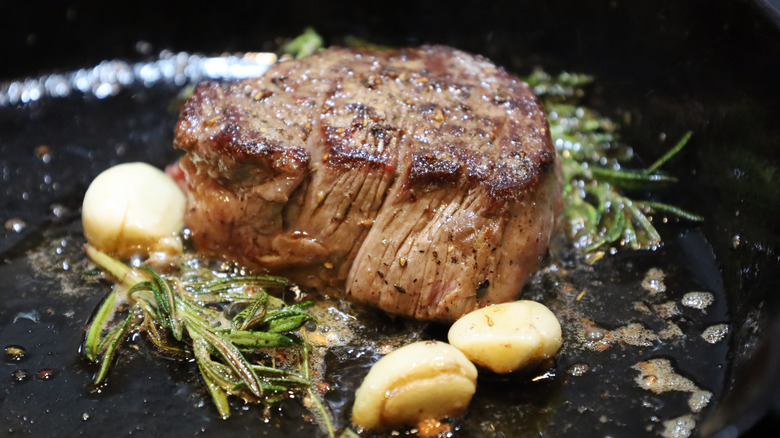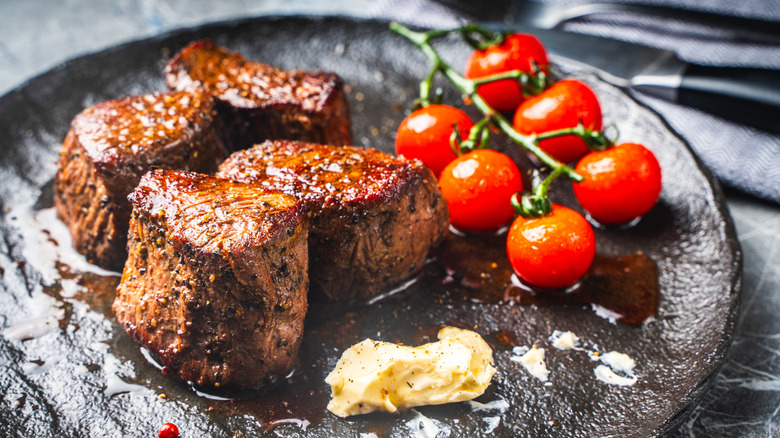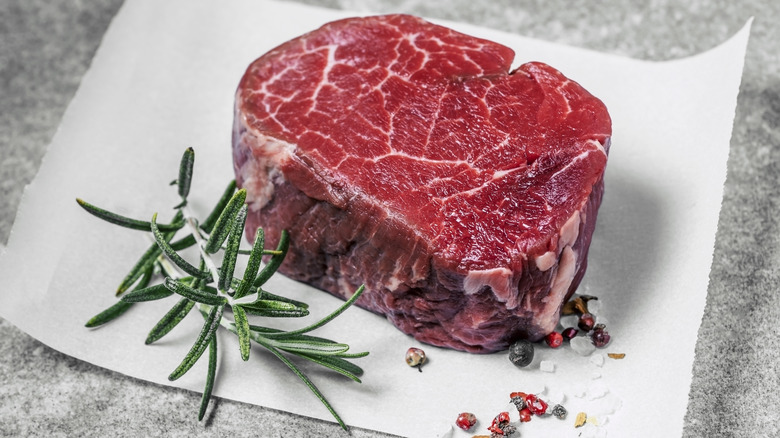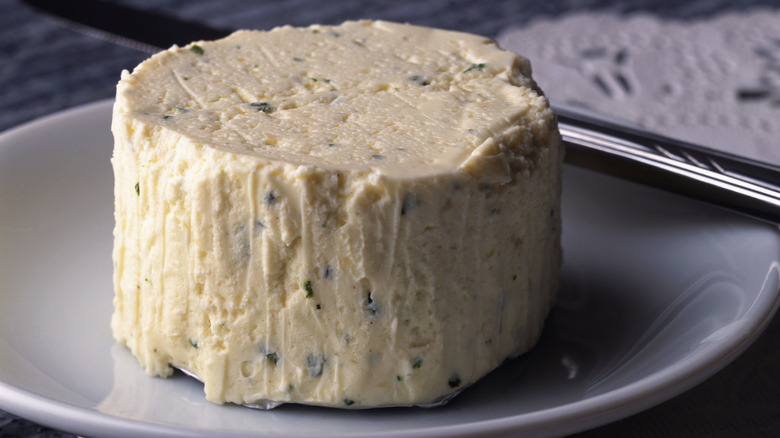
Dear meal delivery service lovers, we’ve got some exciting news for you: Homechef is partnering with everyone’s favorite iconic chef, TV star, and all-around dynamite personality to bring gourmet cooking to the comfort of your own home. That’s right: Gordon Ramsay has jumped aboard the Homechef bandwagon, and through the rest of 2025 (into early 2026), Homechef will be rolling out Ramsay-approved meal kits, designed to make five-star cooking easy even for novice home cooks. We caught up with Ramsay to learn a little more about the collaboration, and to get his tips on how to cook a perfect filet mignon (which, yes, is the star of one of the meals featured in the lineup).
Before you think this is just a PR grab, think again — Ramsay actually had a lot of personal involvement in creating these meals. When asked how the collaboration came about, he was excited about the new venture. “I mean, first time I’ve done anything like this … We worked endlessly on these recipes, removed any form of intimidation that generally comes with a lot of chef recipes. And also we made it easy to follow … the decision on the recipes was a combination of making it exciting enough, but also realistic.”
In the lineup is a scrumptious-sounding French Onion Filet Mignon — which, unsurprisingly, is one of Ramsay’s favorite cuts of steak. As filet is often considered one of the most intimidating cuts of meat to perfect, we figured we’d take the opportunity to learn how to flawlessly execute it from the master chef himself. Here’s what Ramsay said.
Just give it a light sear

Perhaps you’re not accustomed to cooking filet mignon, but you regularly cook other cuts, like a New York strip or ribeye. If you fall into this camp, you’re probably used to giving your steak a good, strong sear — which is frequently the way to go with those cuts, as they’re more fatty than lean cuts of beef. But Gordon Ramsay warns not to be tempted to do the same with a filet mignon. Treating filet like your other favorite cuts could end in disastrous results.
Intimidated by filet? Ramsay offers some advice to home chefs wanting to master the cut: “The most vulnerable part is the hard sear. There’s no fat in that. And so stop worrying about putting too much color on that … All it needs is just a light sear because the flavor is incredible.” Ramsay recommends using vegetable oil and a touch of butter to sear the steak, but finishing it off with some good olive oil.
He says a gentle touch is the best way to treat a filet, and that once you’ve cooked one properly, the experience is indescribable. “Once you’ve nailed the filet, there’s nothing else to achieve. It’s one of the best and one of the most rewarding.” In summary, don’t be too heavy-handed with your filet — there’s no fat to render, so it doesn’t need the sear you’d put on other cuts of beef. As they say, less is more, a mantra which comes into play throughout Ramsay’s filet tips.
Remove it from the pan before it’s fully cooked

Confidence is key when cooking a filet, and this perhaps most importantly comes into play when removing the steak from the pan. The last thing you want to do is overcook a filet. Ramsay says medium-rare to medium is the ideal way to enjoy your finished product; to get that perfect level of interior doneness, you’ll have to remove the filet from its heat source at the ideal time.
Ramsay spoke to letting the filet rest once you’ve taken it out of the pan, saying “Have the confidence to let it sit and watch that temperature rise … don’t fully cook it in the pan. Take it out, let it sit for three or four minutes, and let it reabsorb into its cooking, resting juices.” If you’ve tried filet before and have been underwhelmed, Ramsay suggests it’s possible you’ve just been cooking it too long. “You can identify the quality so much better by just letting the meat rest.”
Treat the filet with reverence

When asked what he’d say to all the filet haters out there, Gordon Ramsay didn’t offer any admonition — instead, he said that to fully enjoy a premium homemade filet experience, you should treat the cut with reverence. Ramsay spoke to never having filet growing up and said that he doesn’t see it as something to be indulged in regularly. “We just couldn’t afford it. And so I love to see it as a bit of a celebration.”
Some find fattier cuts of meat to be more flavorful than filet mignon, and Ramsay would firmly dispute that point — however, how you treat the filet matters greatly. “The filet is like cooking inside a Gucci handbag. It’s just sophisticated beyond belief. And so get it right and there’s nothing that can touch it … [It’s] less complicated than a ribeye and way more flavorsome than a New York strip, I promise you.” So, while the chef recommends using filet as an occasional indulgence rather than part of your weekly meal plan, he stands firm that it’s more satisfying than your go-to fatty cut of beef — as long as it’s prepared correctly.
Let it come to room temperature before cooking

Perhaps you’ve tried cooking filet before, and you’ve even given Gordon Ramsay’s “gentle sear” advice a try — but you’ve still been underwhelmed or downright disappointed by the too-rare interior of the finished product. The likely culprit? Cooking the filet straight from the fridge. Once again, Ramsay suggests that patience is of the utmost importance here, and cooking your filet directly from the fridge is likely to ruin it.
It seems an obvious tip once you know about it, but here’s Ramsay’s reasoning behind the theory: “Never cook a filet straight from the fridge because the outside will have to be well done before the center’s cooked.” Basically, cooking from the fridge will force you to compromise on whether you’d prefer an overdone exterior or an underdone interior — neither of which is ideal if you’re enjoying filet as a rare treat. In terms of bringing it up to room temperature, Ramsay doesn’t suggest any fancy hacks. Rather, he suggests letting the filet rest on the counter for half an hour before you start cooking it, which should allow enough time to bring it up to room temperature.
Season it minimally

When gourmet food comes to mind, it’s easy to apply a “the more, the merrier” theory to seasoning your dishes — indeed, Gordon Ramsay does use some fancy spice combos when seasoning other cuts of meat. However, that’s definitely not the case when it comes to filet mignon. Because filet is such a flavorful cut of meat, the chef never goes overboard when seasoning it. You also don’t need to invest in new seasonings for it, as you probably have everything you need already in your kitchen cupboard.
Yes, salt and pepper are all you need to properly season a filet. Ramsay recommends a coarse grind of both, and he does have a particular seasoning method you’d be wise to imitate. “[I] get my seasoning tray and season the tray with salt and pepper. And then I roll my filet up and down both sides and around the outside.” Unlike with other steaks, you’ll also want to take a bookend approach to seasoning filets. Though seasoning the meat before you cook it is crucial, you should add some more salt and pepper to finish, as well. Ramsay said, “Sadly, we lose 30% of the seasoning whilst it’s cooking. And when it comes out the pan to rest, I re-season it again on top before we eat it. So it’s the only steak out of all the cuts that I season for the second time when it comes out of the pan.”
Try coupling it with Boursin and garlic

As the filet featured in Homechef’s meal kit is French onion-inspired, we asked Gordon Ramsay how those flavors are incorporated into the filet, and why they work well together. He suggested that the French onion characteristics add some more oomph to the filet without overpowering it, saying, “It’s just a really nice combination that’s not too intrusive for the filet flavor … Living in France for that length of time, there’s no greater combination with those three things.”
Unsurprisingly, the prime ingredients Ramsay and Homechef are using to give the filet that French onion essence can be found at your everyday grocery store. “We’re using it with Boursin. Boursin is a beautiful cheese that is slightly peppery. And we sort of almost allow the Boursin to make the filet just a touch more creamier in a way, coupled with the sort of garlic and the herb butter,” Ramsay said. This is a beautiful way to upgrade your already delicious filet without losing what makes it a prime cut of meat. If you’ve already mastered the filet and want to put a little twist on it, try Ramsay’s Boursin, garlic, and herb butter trick.
